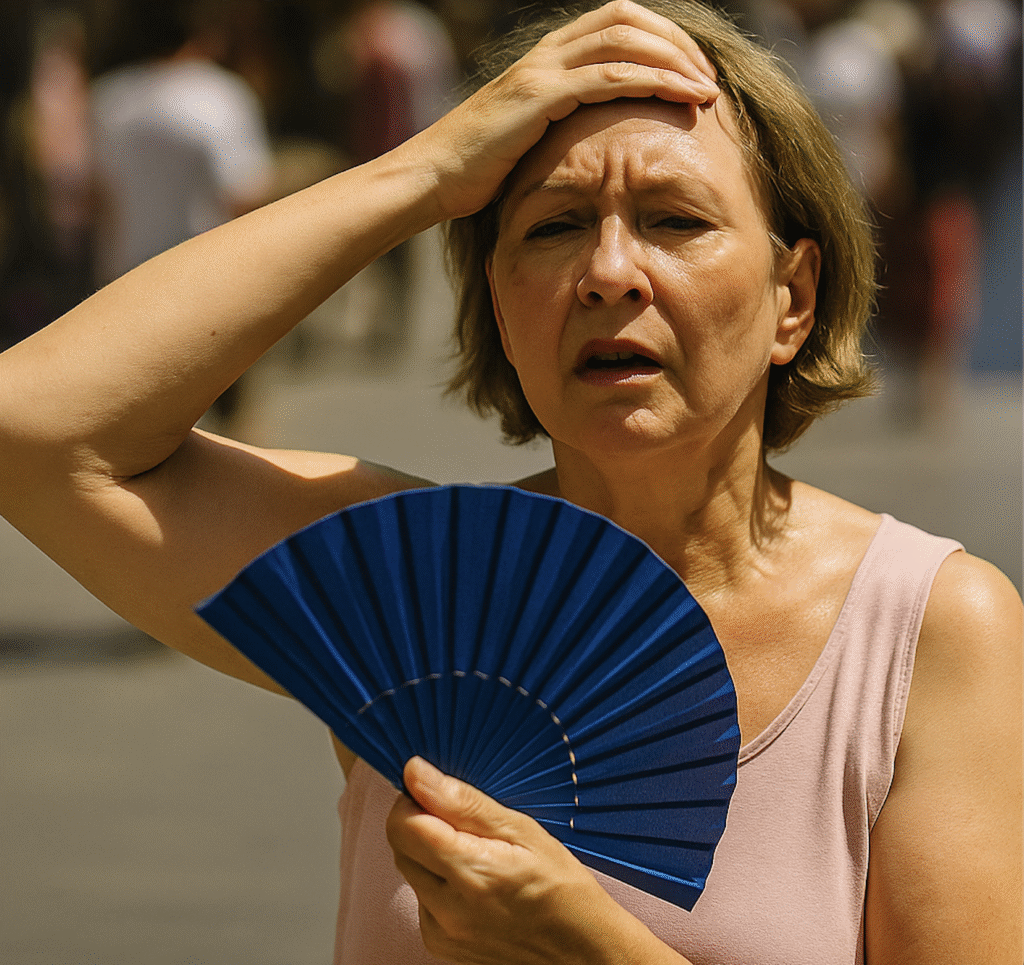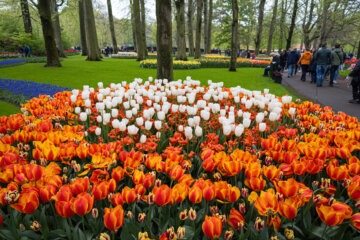Why Heat Makes You Irritable—and How Cultures Around the World Cope
Have you ever noticed that tempers seem to flare more often on hot, sticky days? You’re not imagining it. Heat doesn’t just make us sweat—it can make us snap. From short fuses in traffic jams to simmering tensions during summer vacations, the connection between heat and emotion is real—and science backs it up.
🧠 Heat Isn’t Just Physical—It’s Psychological
When temperatures rise, our bodies work harder to maintain balance. This creates physiological stress:
- Heart rate increases
- Dehydration kicks in faster
- Sleep quality often declines
These effects don’t just strain the body—they directly affect mood and emotional regulation.
Psychologist Craig Anderson coined the “heat hypothesis,” suggesting that high temperatures are associated with increased aggression (Anderson, 2001). It’s not that heat causes aggression outright—but it lowers our tolerance for stress and frustration.
😓 In Other Words: We’re Already Tired, and Then Life Happens
When you’re sweaty, dehydrated, and uncomfortable, even minor annoyances can push you over the edge. That’s because your body is already in a stressed state, and your emotional regulation becomes compromised.
🧬 The Brain-Body Connection: What’s Really Going On?
The limbic system, responsible for emotion, is highly sensitive to physical discomfort. Heat activates the hypothalamus, which regulates both body temperature and emotional responses. When it’s overtaxed, emotional control suffers.
Combined with poor sleep quality, which is common during hot nights, the result is a potent cocktail of:
- Fatigue
- Irritability
- Low frustration tolerance
Even serotonin levels—a key mood stabilizer—can drop in high heat, increasing susceptibility to anxiety and mood swings.
🚗 Real-World Examples: It’s Not Just You
Heat doesn’t just affect how you feel—it shows up in behavioral patterns across the world, often in ways we overlook until we’re in the middle of it.
- Traffic Rage: People are more likely to honk, yell, or act aggressively in hot weather—even if traffic conditions haven’t changed. The rising temperature raises internal pressure, and even the smallest provocation can ignite a response.
- Family Conflict on Vacation: A relaxing getaway can spiral into frustration when heat combines with jet lag, unmet expectations, and sensory overload. Add kids, crowds, or delays, and emotions can boil over.
- Urban Heat Tension: Studies show that violent crimes and aggression spike during heatwaves (Ranson, 2014). Cities with fewer green spaces and poor ventilation see the worst of it—especially in economically stressed neighborhoods.
Even those who are generally calm can find themselves unusually reactive during extreme heat. These patterns are not personal flaws—they’re physiological and psychological responses to environmental stress.
🔥 The heat affects everyone—but how we respond can change everything.
🌿 What You Can Do About It
We can’t control the weather—but we can control how we respond:
- Hydrate Regularly – Even slight dehydration can worsen mood.
- Sleep Cool – Use breathable sheets, fans, or cold showers before bed.
- Recognize the Pattern – Ask yourself: Is this emotion mine, or is it heat-induced?
- Take Cooling Breaks – Find shade, slow down, and reset.
- Practice Mindfulness – Breathing or grounding techniques help calm the nervous system.
💡 Key Insight: Heat Reveals, Not Creates Emotion
Heat doesn’t invent new feelings—it amplifies what’s already there. Think of it as turning up the volume on your internal emotional soundtrack.

🌍 A Traveler’s Reflection: Emotions Under the Sun
I’ve experienced heat in many parts of the world—but nothing compares to Egypt in summer.
Locals assured me, “It’s a dry heat—it’s not so bad.” But that’s a myth. Even while sitting in the shade, sweat rolled into my eyes. There was no breeze, no relief, and even doing nothing became exhausting.
That day, I realized: heat drains patience, distorts perception, and amplifies frustration—even in peaceful moments. And that’s okay.
Traveling through extreme climates taught me that self-compassion is crucial. You can’t power through heat the way you power through a travel itinerary. You need to rest, hydrate, and move with the rhythm of the environment.
✈️ Pro Tips for Hot Climate Travelers:
- Start your day early – Plan outdoor activities in the early morning when it’s cooler and the sun is softer. Many locals in hot regions work or walk at dawn for this reason.
- Take an extended midday break – Between 12–3 p.m., find shade, rest, or enjoy a leisurely indoor activity (museum, lunch, journaling). Think of it as your own version of a siesta.
- Wear light, breathable clothing – Natural fabrics like cotton or linen are best. Avoid tight synthetic materials that trap heat.
- Bring a lightweight scarf or shawl – It works as a sweat rag, sun protector, or even a modesty cover if needed.
- Use a cooling towel or portable fan – These small items make a big difference in managing body heat, especially in dry or dusty regions.
- Hydrate more than you think you need – Heat depletes fluids fast. Add electrolytes if you’re sweating a lot or walking all day.
- Eat lighter meals – Heavy foods raise your internal temperature. Choose fruits, veggies, and water-rich dishes common in local cuisine.
- Know your limits – If you’re starting to feel cranky, dizzy, or off, don’t push through. Resting is smart, not weak.
❓ Myth-Busting: Are People in Hot Regions More Aggressive?
It’s a common belief—but the real answer is more complex. What Does Science Say?
✅ Short-Term Effects Are Real
Yes, heat can trigger temporary aggression, especially during heatwaves. But that doesn’t mean people in hot regions are naturally more aggressive.
🌿 Long-Term Cultural Adaptation
While short-term exposure to heat may increase irritability, many cultures living in hot climates have developed sophisticated behavioral and social adaptations to maintain emotional balance. These aren’t just survival techniques—they’re often woven into the very fabric of daily life, reflecting values like harmony, patience, and collective well-being.
🌸 Thailand
Known for its gentle rhythm and respectful communication, Thai culture places great value on sanuk—the idea of finding joy in everyday life. Emotional restraint and politeness help people navigate discomfort with grace. Outbursts are considered socially disruptive, so emotional regulation becomes a shared cultural priority, even in the tropical heat.
🔥 Southern India
In states like Tamil Nadu and Kerala, the daily schedule naturally shifts around the sun. Mornings begin early, followed by midday breaks when the heat peaks. The cuisine—rich in spices—triggers perspiration that helps cool the body. Social gatherings are often moved to the evenings, when breezes return and tempers ease.
🕌 Morocco
Traditional Moroccan homes are built for heat management, with central courtyards, thick walls, and shaded alleys. Daily life adapts to temperature shifts: shopping is done early, tea is sipped slowly in the shade, and many social rituals—like shared meals or prayer—are timed to cooler hours. Stillness is honored, not rushed.
🌮 Mexico
In many regions, the siesta culture isn’t just about rest—it’s a practical response to oppressive midday heat. Life begins anew in the late afternoon with food, music, and vibrant community interaction. Emotional expression tends to be warm and open, but there’s also a deep respect for pacing and patience under pressure.
🌿 Tanzania & Zanzibar
Here, conversations begin with long, unhurried greetings and a genuine check-in on how you’re doing—emotionally, physically, spiritually. Time feels expansive, and urgency is rare. This culturally ingrained slowness isn’t laziness—it’s an adaptive form of emotional wisdom that softens the edges of environmental hardship.
🧘 Indonesia
The concept of sabar—patience, calm, and endurance—is embedded in everyday life. Spiritual rhythms like prayer, community gatherings, and rest are aligned with natural cycles. During the hottest hours, it’s common to retreat to shaded porches or nap, embracing restoration over constant motion.
🧠 Emotional Regulation Through Culture
In all these examples, emotional regulation is modeled and practiced through social norms, architecture, routines, and mindset. These cultures don’t just endure the heat—they move with it. The result? A shared emotional resilience that minimizes reactivity and nurtures a deeper sense of presence.
🌡️ In hot climates, slowing down isn’t giving up—it’s a conscious way to preserve peace, patience, and connection.
📉 What Shapes Aggression More Than Heat?
While heat can intensify discomfort and lower emotional tolerance, research shows that aggression is more strongly and consistently linked to deeper social and psychological factors. These influences shape long-term behavioral patterns far more than climate does.
🔍 Key Factors That Predict Aggression:
💰 Economic Stress
People under financial pressure are more likely to experience chronic stress, frustration, and reduced access to healthy coping mechanisms.
Reference: Agnew’s General Strain Theory (1992) identifies poverty and inequality as key contributors to aggression and delinquency—especially when individuals feel blocked from achieving life goals.
🧠 Exposure to Violence
Those who grow up in violent homes or communities are at greater risk of repeating those patterns later in life.
Reference: Widom (1989) showed that childhood exposure to abuse or violence increases the likelihood of later aggressive or antisocial behavior—even more than environmental conditions like heat.
🌍 Cultural Views on Anger and Expression
Some cultures encourage open emotional expression, while others value restraint and harmony. This deeply shapes how people respond to provocation or stress.
Reference: Markus & Kitayama (1991) found that individualistic cultures (e.g., U.S.) often see anger as a form of self-assertion, while collectivist cultures (e.g., Japan or Indonesia) view it as socially disruptive and inappropriate.
🏘️ Education and Community Support
Strong schools, accessible mental health care, and cohesive neighborhoods reduce violence—even in harsh climates.
Reference: Sampson, Raudenbush & Earls (1997) introduced the concept of collective efficacy—a community’s ability to regulate itself and maintain order through trust and cooperation.
📈 The Bottom Line
Even in places with intense heat, it’s social infrastructure—not temperature—that determines how people behave.
- A poor, crowded city with weak institutions is more vulnerable to violence during heatwaves.
- But a connected, well-supported community can remain peaceful—even under physical discomfort.
🔑 Conclusion: Climate may raise the volume—but social conditions decide the tone.
🧠 Psychological Insight: It’s About Adaptation, Not Aggression
While heat may test our emotional limits, it doesn’t dictate who we are. People in hot climates often adapt not through aggression, but through deep emotional intelligence, patience, and rhythm. Emotional regulation becomes a learned survival tool—woven into daily life, social norms, and community structure.
From taking midday breaks to emphasizing non-confrontation in communication, these strategies are not signs of weakness—they’re examples of adaptive wisdom. Over time, communities develop slower pacing, deeper connection, and shared understanding as a response to environmental stress.
In places like Zanzibar, India, and Southeast Asia, you’ll find unhurried greetings, communal meals, and quiet pauses built into the day—emotional cooling systems passed down through generations.
Even when discomfort is unavoidable, these cultures model how to preserve dignity and peace through grounded, collective behavior.
🌡️ Final Thought: Heat Is Real, But So Is Resilience
Heat affects how we feel, think, and react—but it doesn’t define us.
Yes, heat can trigger irritability, fatigue, and emotional overwhelm—but it also reveals what’s already inside us. With awareness and intention, we can respond rather than react. We can learn to pace ourselves, extend grace, and recognize when we’re running hot—internally or externally.
As travelers, it’s easy to view emotional fatigue in hot weather as personal failure. But often, it’s simply your nervous system doing its job under pressure. And in observing how locals gracefully navigate the same heat, we’re reminded: there’s another way.
🌍 Resilience isn’t about pushing through—it’s about moving with the environment.
In the heat, slow down. Soften. Hydrate. Laugh. Connect.
The sun may be intense, but so is the strength of a well-regulated mind.
Related: Chasing Temperate Bliss: Evaluating the Costs and Benefits of Vacation Climates on Well-being
📚 References
- Anderson, C. A. (2001). Heat and Violence. Current Directions in Psychological Science, 10(1), 33–38.
- Ranson, M. (2014). Crime, Weather, and Climate Change. Journal of Environmental Economics and Management, 67(3), 274–302.
- Hsiang, S. M., Burke, M., & Miguel, E. (2013). Quantifying the influence of climate on human conflict. Science, 341(6151), 1235367.
- Cohen, D., Nisbett, R. E., Bowdle, B. F., & Schwarz, N. (1996). Insult, aggression, and the Southern culture of honor. Journal of Personality and Social Psychology, 70(5), 945–960.
- Agnew, R. (1992). Foundation for a general strain theory of crime and delinquency. Criminology, 30(1), 47–87.
- Widom, C. S. (1989). The cycle of violence. Science, 244(4901), 160–166.
- Markus, H. R., & Kitayama, S. (1991). Culture and the self: Implications for cognition, emotion, and motivation. Psychological Review, 98(2), 224–253.
- Sampson, R. J., Raudenbush, S. W., & Earls, F. (1997). Neighborhoods and violent crime: A multilevel study of collective efficacy. Science, 277(5328), 918–924.




0 Comments